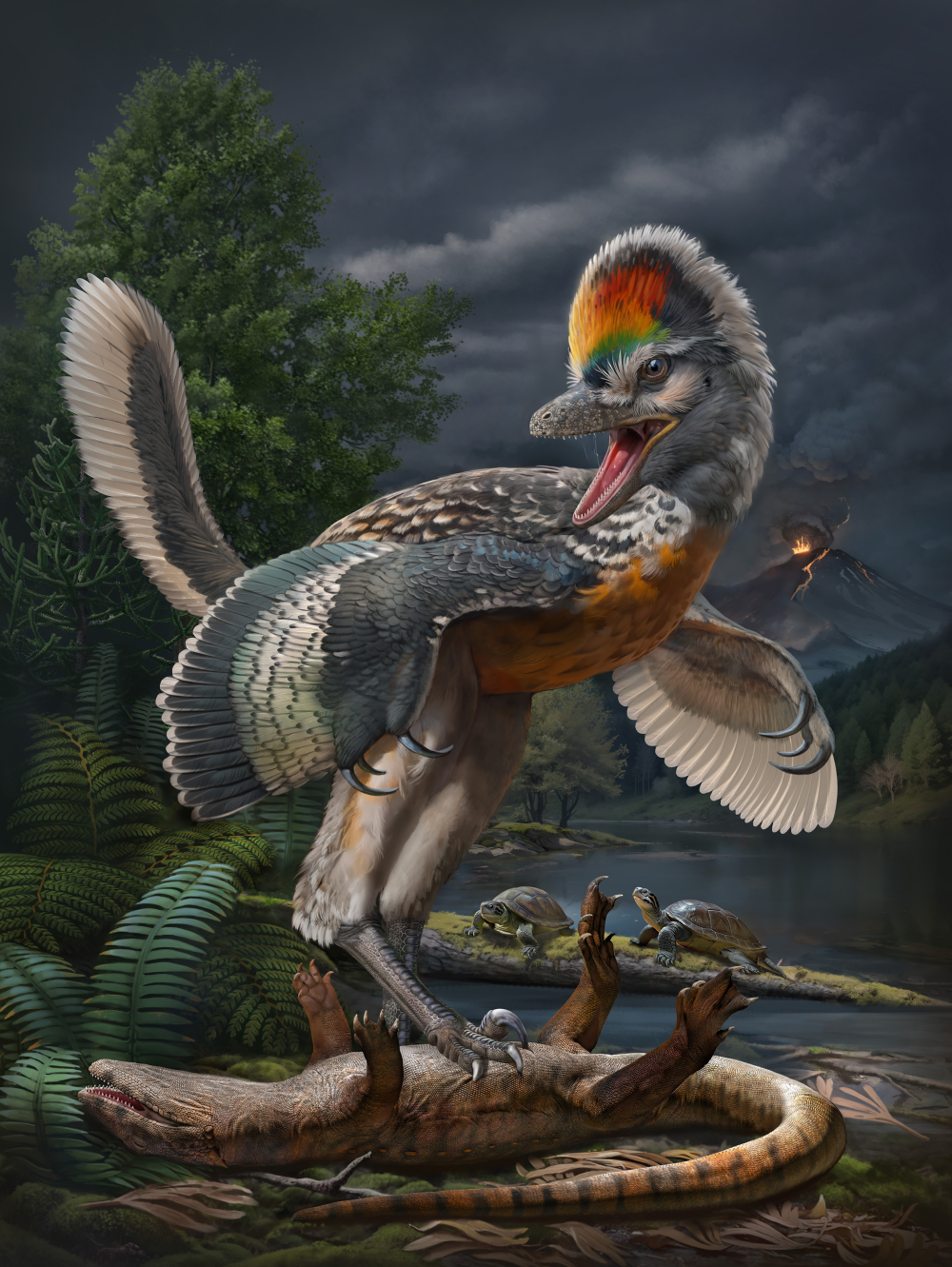A uniquely leggy dinosaur dating back 150 million years may have adapted to swamp life by evolving to have a lower leg twice as long as its thigh. The trait has never been seen in dinosaurs before and indicates this new-to-science species was either an extremely fast runner or used to wade through swampy environments hunting for turtles and fish.
The bizarre species was described following the discovery of a fossil retrieved from from Zhenghe County, Fujian Province, and has been named Fujianvenator prodigiosus. “Fujian” derives from the Mandarin for where the holotype was found, “venator” from the Latin for hunter, and “prodigiosus” is in honor of its unique and peculiar legs, being Latin for bizarre.
It sits within the Avialae clade that’s comprised of all modern birds – but not Deinonychus or Troodon – and dates back to the Jurassic, an era from which we have a limited diversity of fossils to work from. This makes our bizarre leggy dino a valuable fossil, as it can provide new insights into the evolution of the avialan body plan, and it’s already provided some surprises.
“Our comparative analyses show that marked changes in body plan occurred along the early avialan line, which is largely driven by the forelimb, eventually giving rise to the typical bird limb proportion,” said Dr Wang Min from the Institute of Vertebrate Paleontology and Paleoanthropology of the Chinese Academy of Sciences, lead and corresponding author of the study, in a statement. “However, Fujianvenator is an odd species that diverged from this main trajectory and evolved bizarre hindlimb architecture.”

The leggy Swamp Queen in all her glory.
Image credit: ZHAO Chuang
Fujianvenator is remembered in some spectacular palaeoart that captures the holotype’s bizarrely long legs, with some very 80s rainbow bouffant plumage to boot. Iridescent feathers have been indicated in other avialan specimens, greatly expanding the range of feather colors achievable by these animals.
While such long legs can be good for running, other fossils found in the same area include ray-finned fish and turtles, which leans towards the theory that F. prodigiosus was Swamp Queen in her heyday. The researchers have dubbed the collection the Zhenghe Fauna, made up of a cast of remarkably diverse specimens that highlight how important this site is for fossils and the evolutionary secrets they hold.
“The sheer diversity of fossils, and the distinctive palaeoenvironment, combined with the precise age constraints of the fossil-bearing horizons (148–150 Ma) [million years], show the great potential of Zhenghe as an emerging Jurassic vertebrate fauna that fills a key temporal and geological gap in our understanding of the ecosystems of northeast Asia in the Late Jurassic,” concluded the study authors.
The study is published in Nature.
Source Link: 150 Million-Year-Old Dinosaur Had Uniquely Long Legs Never Seen Before